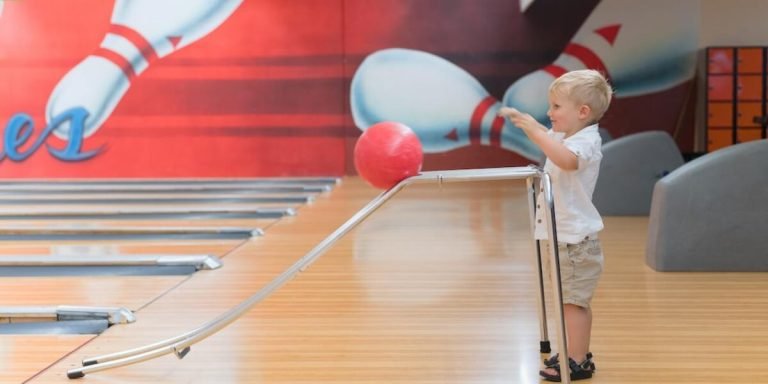Occupational Therapy for Sensory Processing Disorder: A Comprehensive Guide to Understanding and Approach
Navigating the world of childhood education and special support resources can be a challenge, particularly when it comes to supporting children with specific needs such as Sensory Processing Disorder (SPD). Occupational therapy for sensory processing disorder has been gaining attention in recent years due to its effectiveness. It provides targeted strategies that help children manage their symptoms, leading to improvements in behavior, academic success and overall quality of life.
Understanding occupational therapy for SPD is essential for educators and parents involved in special education. This comprehensive guide will delve into what SPD really means – recognizing its signs, understanding how it impacts a child’s ability to learn and function effectively within the learning environment. We’ll also explore why occupational therapy plays a crucial role as an approach towards managing this condition more effectively.
Did you know?
Surprisingly, it’s not just children with diagnosed Sensory Processing Disorder who benefit from occupational therapy; research shows even those with mild sensory issues can experience significant improvements in handling daily tasks and developing social skills.
Understanding Occupational Therapy for Sensory Processing Disorder
As parents and educators, it is essential to understand the role of occupational therapy in treating sensory processing disorder. This condition affects how children process information from their five senses – touch, sight, taste, smell and hearing – causing them to experience discomfort or even pain from ordinary environmental stimuli that others find harmless.
Occupational therapists play a vital role in helping these youngsters navigate daily encounters with the world around them. They use various therapeutic techniques tailored to each child’s particular needs under therapies like fine motor skills practice for coordination difficulties or systematic desensitization for sensitivities against specific sensations like noise or certain textures.
In this digital age (2023), technology has also brought about substantial innovation in behavioral therapies aimed towards special education support systems as well as resources intended specifically for assisting those with sensory processing disorders. Tools such as interactive touchscreen devices are utilized by occupational therapists not only because they motivate participation but can be programmed according to individual learning styles and abilities too making the treatment more effective.
The Role of Occupational Therapists in Managing SPD
Occupational therapy for sensory processing disorder (SPD) plays a pivotal role in managing this condition, particularly in the realm of childhood education. Occupational therapists utilize innovative strategies and technology integration to make learning experiences more accessible and enjoyable for children with SPD.
Children struggling with SPD often find it challenging to process sensory information like touch, movement, smell, taste, sight and sound effectively. This can lead to difficulties in performing everyday tasks or coping up with various educational activities at school. Hence enters occupational therapy – a boon that offers specific therapeutic approaches tailored perfectly for each child’s unique needs.
The primary goal of an occupational therapist is creating meaningful engagement levels by focusing on three core areas – improving participation in daily activities (occupations), enhancing performance skills needed for these occupations such as motor coordination or organization abilities while also modifying the environment wherever necessary which serves as “Special Education Resources” support element largely helpful optimizing kids’ interaction within their surroundings.
Techniques Used in Occupational Therapy for SPD
Occupational therapy for sensory processing disorder (SPD) incorporates unique techniques tailored to help children improve their daily life skills. As technology continues to revolutionize education, it becomes a crucial resource in occupational therapy.
One of the primary techniques employed is Sensory Integration Therapy. This approach allows children with SPD to engage in play-based activities that are subtly structured so they can progressively learn how to respond appropriately and comfortingly towards different sensations.
The use of Assistive Technology has become an increasingly beneficial tool in improving functional capabilities of kids dealing with SPD. These technologies may include special computer programs or apps designed specifically for sensory integration exercises which provide interactive platforms encouraging more reliable responses from the child.
Moreover, Therapists also turn towards Virtual Reality Sessions now due its upgraded abilities. VR systems deliver immersive multi-sensory environments prompting better engagement from the child – hence boosting therapeutic outcomes substantially.
Integrating Sensory Integration Strategies at Home and School
Occupational therapy for sensory processing disorder is a critical approach that can yield significant improvements in the lives of children affected by this condition. It’s crucial not only to incorporate these strategies during therapy sessions but also at home and school — environments where a child spends most of their time. As we move further into 2023, technology is playing an increasingly essential role in facilitating such integrations.
Educators are using technology innovatively in special education to support students with sensory processing disorders. They employ digital tools such as tactile screens, occupational therapy apps, and virtual reality experiences for tailored sensory integration exercises.
For example, children can use applications on tablets with haptic feedback to simulate touching ‘rough’ or ‘smooth’ surfaces virtually. This helps them better navigate real-world sensations.
Embracing technology amplifies the effects of traditional methods and adds diversity and adaptability. Technology meets diverse individual needs, such as those of kids with Sensory Processing Disorder (SPD). Tailoring technological interventions to each child’s requirements ensures they can participate in household chores and classroom curriculum without triggering SPD symptoms.
Parents likewise needn’t fret about integrating these tech-driven approaches at home either!
Creating an SPD-Friendly Environment at Home
Understanding sensory integration and incorporating strategies to create an SPD-friendly environment at home can be a game changer for children struggling with Sensory Processing Disorder (SPD). As we delve into the new year of 2023, parents and educators must embrace the advancements in technology as well.
Now how does one merge this traditional therapeutic approach with modern tech advances? The answer is simple – through apps and e-resources specifically designed for special education support! They are user friendly, easily adaptable depending on individual needs thereby allowing you to implement customized learning practices right from your living room!
You may incorporate these applications into daily activities like cooking or gardening where they act as useful guides aiding in tasks requiring fine motor skills while improving hand-eye coordination simultaneously.
Next comes setting up specific areas within your house which cater exclusively towards their educational growth. For example, a quiet reading corner equipped with audiobooks catering relevant content focusing more on auditory development rather than visual engagement could work wonders.
To make lessons interactive yet informative there are numerous online platforms offering courses using fun animations so kids can learn academic topics without getting bored; plus it aids retention too!
Supportive Educational Resources for Children with SPD
Let’s delve into understanding supportive educational resources and how they play a critical role in shaping the learning experience of such students both at home and school.
Several digital tools are now available to supplement traditional teaching methods— an approach also known as technology integration in education. These tech-driven platforms allow learners with SPD to have self-paced, customized sessions complimenting their individual differences while reinforcing problem-solving skills.
Every child learns differently – this is particularly true when we talk about children navigating through life with SPD. Customized mobile applications like Otsimo Special Education APP offer various games developed by therapists focusing on motor development skills fundamental for writing or reading exercises.
Online portals like BrainPop provide animated videos explaining complex concepts catering to different grade levels across subjects—an exceptional tool offering visual reinforcement which often proves beneficial for kids facing difficulties due to SPD. The keyword here remains ‘engagement’. When lessons become interactive sessions instead of monotonous lectures, it inevitably boosts interest among pupils encouraging more participation leading towards better academic performance over time.
Evaluating the Effectiveness of Special Education Resources
Effective utilization of special education resources plays a significant role in addressing sensory processing disorder in children. Occupational therapy, as one such integral resource, has transformed to meet the challenges posed by this condition and fulfill the educational needs of these youngsters.
The methodology involved with occupational therapy for sensory processing disorder doesn’t merely encompass traditional techniques anymore. Today’s therapists are leveraging advanced technology tools to further enhance their efficacy and maximize outcomes for children. This includes virtual reality simulations that allow kids to practice dealing with stimuli in a controlled environment or interactive apps that promote skills development through fun exercises.
These technological integrations have proven beneficial not only from an accessibility standpoint but also when it comes to gauging progress effectively. Data collected real-time during tech-augmented sessions provide valuable insights into improvements on individual level, enabling educators and parents alike devising personalized strategies based on each child’s specific challenges.
Embracing advancements like the use of AI-driven analytics helps identify trends may lead us towards better interventions over time—such is our hope moving forward into 2023.
It’s essential we continue exploring ways technology can bolster support provided under special education programs – be it materials designed specifically for helping those struggling with handling physical sensations or unique systems developed considering intellectual capabilities differing vastly among young learners suffering from sensory processing disorders.
Criteria for Assessing Special Needs Programs
Assessing the effectiveness of special education resources like occupational therapy for sensory processing disorder often requires a well-defined and comprehensive criteria. This will ensure that these programs are providing optimum benefit to children with special needs.
The first criterion is relevance. The resource should be tailored towards satisfying the unique educational requirements posed by conditions such as sensory processing disorders, autism or ADHD amongst others. For instance, strategies in programs focusing on occupational therapy for sensory processing disorder typically include activities designed to improve motor skills, encourage social interaction and support self-regulation.
Secondly, accessibility is paramount when assessing any program’s efficacy because it impacts how many students can actually utilise them. Technological advancements have enabled educators to deliver learning materials via digital platforms ensuring their availability beyond traditional classroom settings especially post-2020’s pandemic scenario.
Long-Term Outcomes of Intervention Strategies
Integrating technology in special education resources has been a game-changer, particularly for children with sensory processing disorder. One intervention strategy that’s gaining massive traction is occupational therapy (OT). Often lauded for its merits and outcomes, how do we assess the long-term results of this innovative approach?
Occupational therapy for sensory processing disorder incorporates various tools and techniques to help kids understand and react appropriately to everyday stimuli. It boosts their ability to participate fully at school or home activities.
Let’s delve deeper into assessing the long-term outcomes of such strategies:
1. **Skills Improvement:** Over time, it becomes evident whether these strategies enhance a child’s necessary skills or not. OT promotes fine motor skills development – handwriting improvement may be observed over several weeks or months.
2.The measure can also lie in social interactions – improved playtime behavior demonstrating successful learning from Occupational Therapy sessions.
3. **Behavior Changes:** Longstanding habits take significant effort to alter but are an important marker . Has there been any reduction in adverse responses?
A decreased frequency of outbursts indicates progress thanks to OT efforts.
4. **Academic Progress** Special Educational Resources tailored involving technology often lead positively towards academic achievement which can be measured by grades /test scores; better performance signifies success in implementing effective aids like computer software applications designed specifically for children facing difficulties due to Sensory Processing Disorder .
Conclusion
In the universe of childhood education and development, occupational therapy for sensory processing disorder stands as a beacon that not only illuminates the path but also facilitates every step. It is an approach geared towards meeting children where they are while equipping them with tools to navigate their world successfully.
Feel free to take full advantage of the wealth of resources available on our website – from perceptive articles on various parenting challenges to comprehensive guides designed just for educators. As you journey through your individual educational mission, remember: knowledge serves as both compass and companion. The collective wisdom we share here will ensure you’re never alone in this voyage – so do continue exploring!







